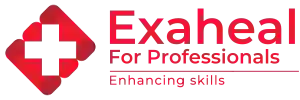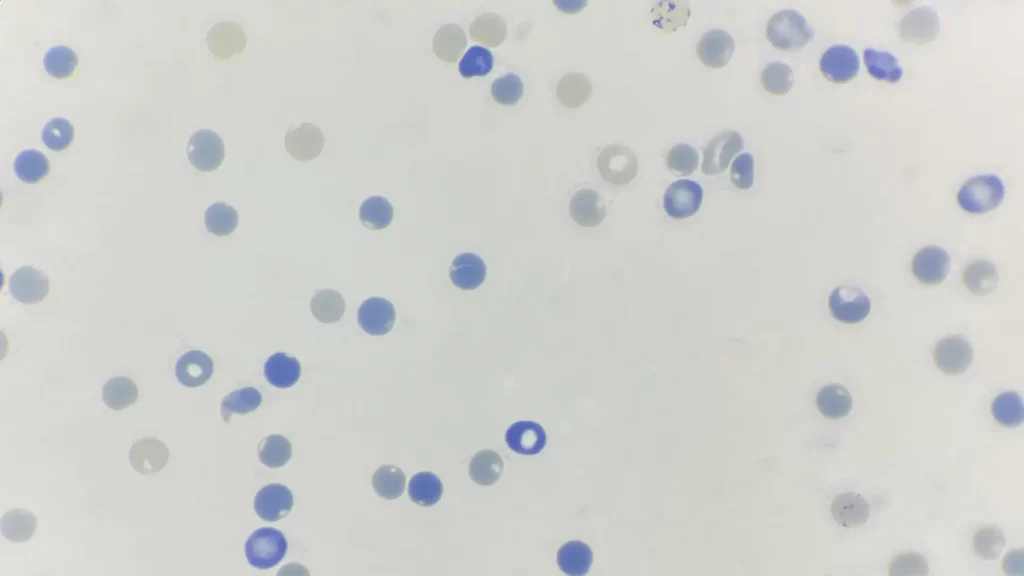Principle
Reticulocytes are immature red blood cells (RBCs) that contain residual ribosomal RNA (rRNA). These RNA remnants react with basic dyes like azure B, brilliant cresyl blue, or new methylene blue, producing a blue or purple precipitate of granules or filaments. This reaction occurs only in vital staining (live, unfixed cells) and is classified as metachromatic staining.
Staining solution
- Dissolve 1 gram of new methylene blue or azure B in 100 ml of iso-osmotic phosphate buffer (pH 6.5).
- Filter the solution.
- Store at 4°C.
Method
Place 2–3 drops of the dye solution into a 75 x 10 mm plastic tube using a plastic Pasteur pipette.
Add 2–4 volumes of the patient’s anticoagulated blood, and mix:
- Use more blood for anemic patients.
- Use less blood for polycythemic patients.
Incubate at 37°C for 15–20 minutes.
Resuspend the RBCs gently and prepare a blood film on a glass slide.
Air-dry the slide. Do not counterstain.
- Place 2–3 drops of the dye solution into a 75 x 10 mm plastic tube using a plastic Pasteur pipette.
- Add 2–4 volumes of the patient’s anticoagulated blood and mix. Use less blood for polycythemic patients.
- Incubate at 37°C for 15–20 minutes.
Resuspend the RBCs gently and prepare a blood film on a glass slide.
Air-dry the slide. Do not counterstain.
Counting
Choose an area of the film where the cells are undistorted and the staining is good. Using 100x oil immersion lens, count the number of reticulocytes seen per 1000 red cells.
Counting of red cells can be helped by inserting into the eyepiece a paper or cardboard diaphragm, in the centre of which has been cut a small square with sides about 4 mm in length. An easier time-saving method is to use a Miller-Ocular insert. This is an eyepiece giving a square field, in the corner of which is a smaller ruled square, one ninth the area of the total square. Reticulocytes are counted in the large square, and the total numbers of red cells is counted in the small square. Reticulocyte counts should be done in large squares, and RBC counts should be done in small squares.
Calculation
Number of Reticulocytes in N field = X
Average number of red cells per field = Y
Total number of red cells in N fields = N x Y
Reticulocyte % = [X/(N x Y)] x 100%
Absolute Reticulocyte count = % x RBC
Result
Reticulocytes are identified as non-nucleated red cells that contain at least 2 blue-staining particles or one particle linked to a filamentous thread. Reticulocytes can be classified into four groups, ranging from the most immature reticulocytes with a large clump of reticulin (group 1), to the most mature, with a few granules of reticulin (group IV).
Normal range
In adults and children: 0.5–2.5%
In infants: 2–5%

